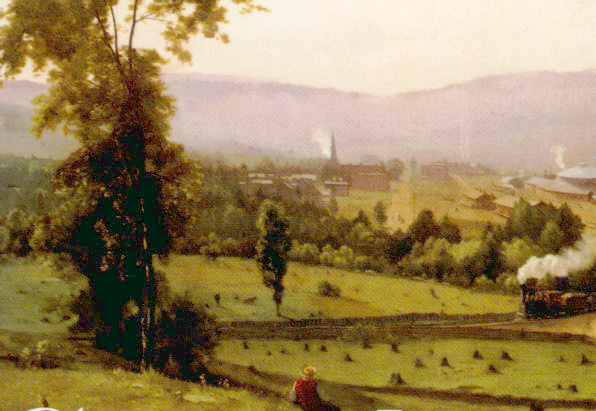
Models, facets and concepts to consider in discussing landscape changes.
Write for five minutes, without stopping:
What evidence is there for a conflict in perceptions or values in the early America such as reflected in the Thoreau and Siry readings with respect to understanding how America was and ought to be settled?
Note the author and page.
One way to think about changes in terms of a model.
Notes on Marshes of the Ocean Shore.
Reisner's criticism of land policy and irrigation practices.
Further questions | terms | models | links | labor theory of value | cultural landscape | related models |
Auxiliary information for organizing notes & explaining historical changes.
The ecologic approach to environmental history uses models to identify changes in patterns of settlement, populations, land-use and technological alterations of elements and features in any geographical location.
Sectionalism, or regional distinctions due to climate, soil, geology, weather & culture or economy:
Eastern versus western US -- adequate rainfall versus arid regions
Northern versus southern US -- glaciated as opposed to laterite (rain soaked) clay soils
Rivers are key commercial lines of communication to the interior and the seaboard.
Animals were introduced and European grasses with the livestock to the colonies
Spanish horses, cattle, hogs for the hide (leather) and tallow (candles) trade.
English and Spanish sheep, goats, chickens and
Kentucky bluegrass is actually a European introduction.
Agriculture competed with the fur trade (beavers, deer, fox. ermine, wolves) in frontier land-use patterns.
Often questions we ask lead like frayed threads to reconsider our assumptions.
| What is evidence? | What is history? | What is ecology? |
America's natural heritage essay
This model is a sorting device that can be used to examine nature, ideas about nature, and the formation of a cultural landscape.
| Terms | Concentric model | examples |
|---|---|---|
| Cultural sphere | Cultural creativity, faith & morals, ideas, music | |
| labor sphere | Human & animal work, social economy | |
| Ecological Core | Water, energy, air, land, biota . . . | |
| labor sphere | Human & animal work, social economy | |
| Cultural sphere | Imaginative realm, ethics, art, architecture |
The creation of cultural landscapes is a primary means to understand environmental changes in history.
linear model from which the above is dervied.
A reconstruction of an eastern woodland Amerindian settlement, Virginia.
That is any cultural landscape is both the product of repeated adaptations to nature and the images, perceptions and values in response to the physical, climatic, geographical and chemical constraints that are inherent in nature.
It takes time and exertion of effort to transform the terrain -- cultural landscapes are the product of that social transformation, emodied in structures, fields, orchards or ritual sites. These changes can be described in terms of a linear model from which the concentric circle model is a further elaboration.
What do we mean by values more broadly speaking?
The model bears some derivative characteristics from the labor theory of value concept and the formula that describes that theory. The formula is shown here:
| Natural resources | Human resources |
Capital surplus |
|---|---|---|
| ecological core | products |
|
| landscapes | subsistence and commercial work |
|
| watershed | unions, guilds, professions |
goods, services, inventions |
Jamestown, 1607. England's earliest sustained settlement was in the Chesapeake Bay region. An artists depiction.
Here, the formation of cultural landscapes in the region drew on English precedents, with introduction of horses, cattle and crops -- although Indian corn and wild game equally nourished these immigrants from Europe.
ecological core is the focal point where beavers, water sources, oil well or electricity generation from natural resources are all of central importance to how people settle and in settlements, alter their surroundings. The extent of the alteration depends on the forms that economic wealth take and are used in securing food, fuel, fiber and forage (provisions and or animal feed).
Ecological ideas developed slowly .
The economic well being of nations depends on ecological and environmental conditions that differs in places depending on geology, geography, chemistry, climate and physics.
At the center of her concentric circular model of the dynamic conditions of existence, was a distinct alteration of the core by grazing, agriculture, and commerce. These changes were later joined by urban and industrial transformation of both the core ecological conditions and the social relationships demanded by labor in the transformation of resources into services or products.
We call this transformation, the creation of wealth, or surplus in the Malthusian, Marxist and utilitarian concepts, especially the economic ideas of David Ricardo.
